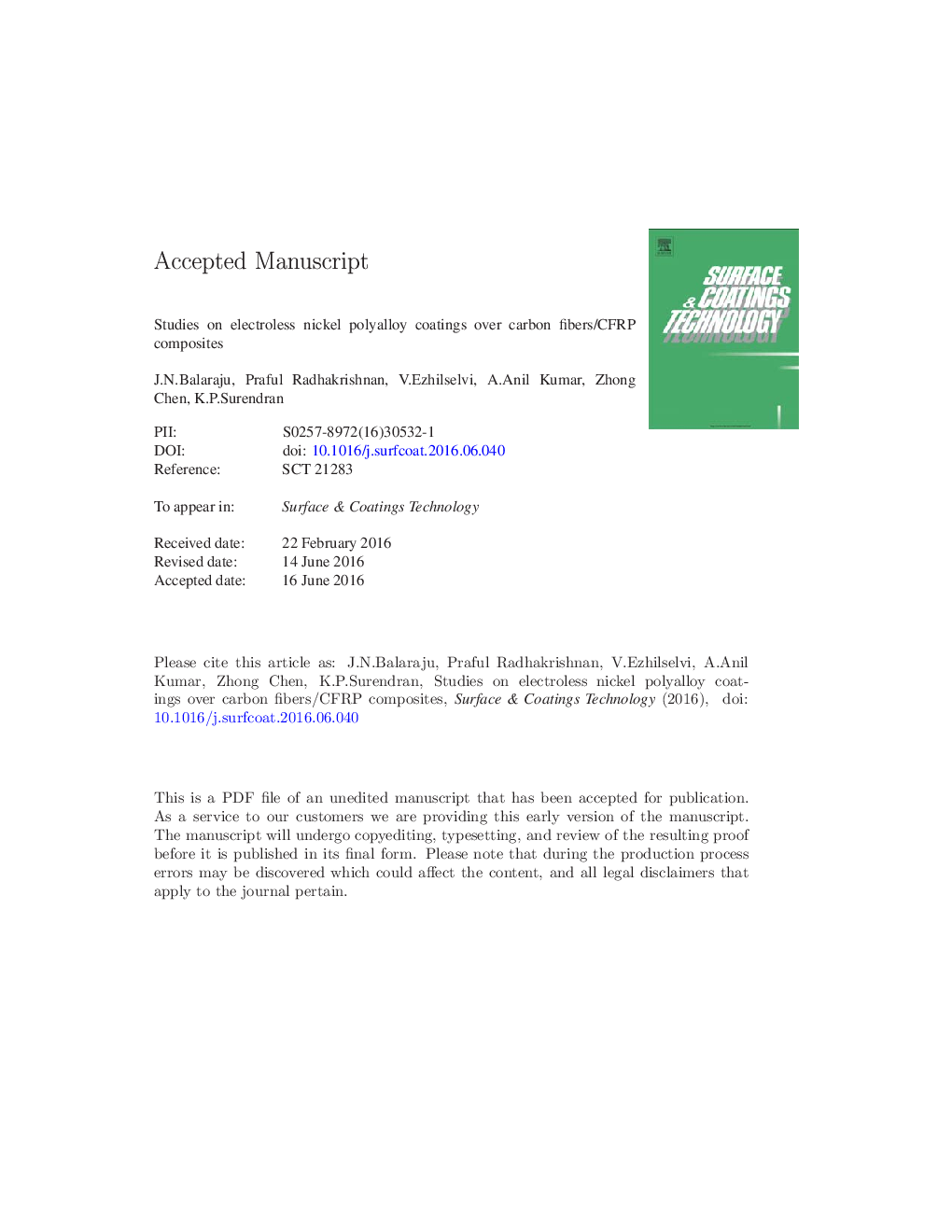| Article ID | Journal | Published Year | Pages | File Type |
|---|---|---|---|---|
| 8025278 | Surface and Coatings Technology | 2016 | 41 Pages |
Abstract
Interest in electroless plating of nickel based alloys over carbon fibers has increased due to its excellent electrical properties and also due to its corrosion, wear and thermal resistances. In the present investigation electroless nickel based polyalloys such as Ni-P, Ni-Cu-P and Ni-W-Cu-P coatings were deposited over carbon fibers using alkaline citrate based bath. EDX analysis revealed that P content in binary Ni-P was 8.84 wt.%. Incorporation of Cu resulted in a ternary Ni-Cu-P deposit with 15.4 wt.% Cu and 5.6 wt.% P while the incorporation of W together with Cu resulted in a quaternary Ni-W-Cu-P deposit with 3.18 wt.% P, 2.23 wt.% Cu and 2.61 wt.% W. SEM studies showed a smooth nodular free ternary Ni-Cu-P deposit surface, whereas coarse nodules existed for Ni-W-Cu-P deposit. XRD patterns showed Ni (111) as the prominent peak for all deposits. The presence of a Ni (200) and C (110) peaks were also seen for Ni-W-Cu-P deposit. The quaternary Ni-W-Cu-P deposit exhibited marginally a sharper peak, indicating microcrystalline nature of the coating. DSC thermograms showed a single exothermic peak at 365 °C for Ni-P deposit and at 377 °C for Ni-Cu-P deposit. The thermal stability of the coating had increased due to the incorporation of tungsten and copper which is indicated by the shift in exothermic peak to higher temperature (440 °C). Tensile test data revealed that both Ni-Cu-P (580 MPa) and Ni-W-Cu-P (538.8 MPa) deposits showed a decrease in tensile strength as compared to the binary Ni-P deposit (1402.3 MPa). From the electrical resistivity measurements, the ternary deposit showed almost 96% decrease in the resistivity as compared to the uncoated fibers. To characterize EMI shielding effectiveness of the electroless nickel alloys, coatings were made on CFRP composites. It was found from the EMI shielding effectiveness tests that the quaternary deposit exhibited highest shielding effectiveness of 37 dB compared to others, which is well suited for absorption based applications especially in defense sectors.
Keywords
Related Topics
Physical Sciences and Engineering
Materials Science
Nanotechnology
Authors
J.N.Balaraju J.N.Balaraju, Praful Radhakrishnan, V.Ezhilselvi V.Ezhilselvi, A.Anil Kumar, Zhong Chen, K.P.Surendran K.P.Surendran,
